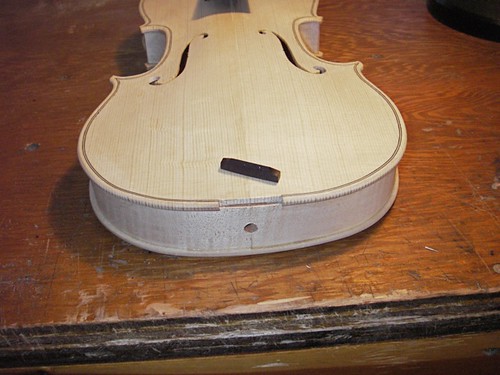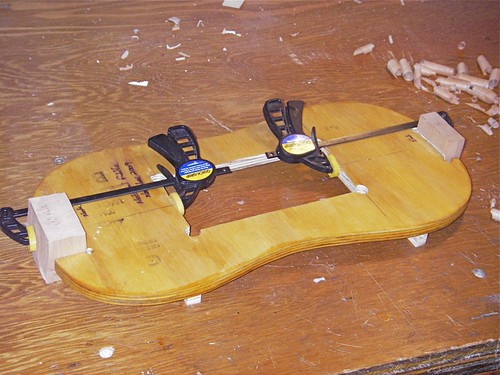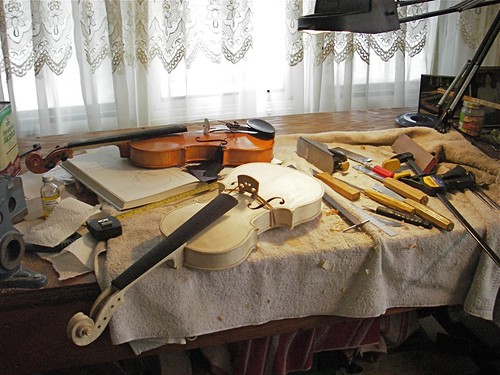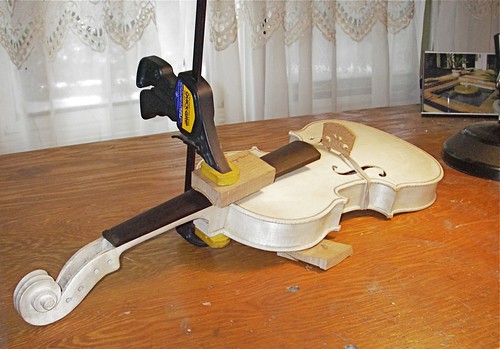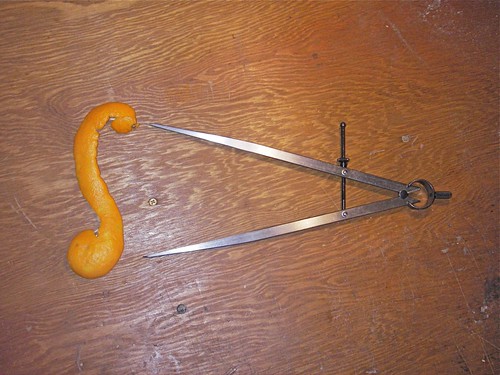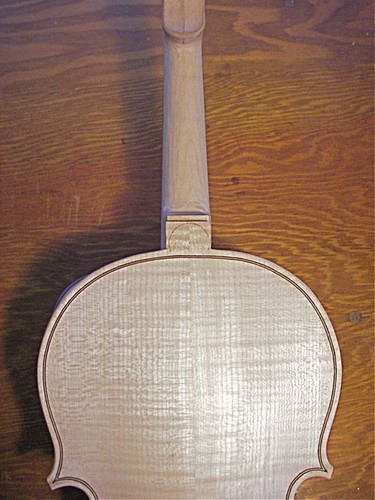
Below is the button, and neck, mostly shaped. I like a large-sized button, this one being about 24 mm in diameter. It appears that the buttons were originally much larger than they are now, in part because each time the neck is replaced, a bit of wood is lost. Also, the classical Italian violins were Baroque instruments, which had bulkier necks. Most have been reshaped to more modern (ca 1800) standards. But this one is mine, so I can do whatever I want! :-)

The saddle is a small piece of ebony fit into the top of the instrument. It sits on the end block, and its purpose is to take the pressure of the tailgut. The tailgut holds the tailpiece, which holds the strings; on the other end, the tailgut loops around the endpin, which will fit into the small hole in the ribs. Without the ebony, the tailgut would crush the spruce top, and the tailpiece would contact the top.
